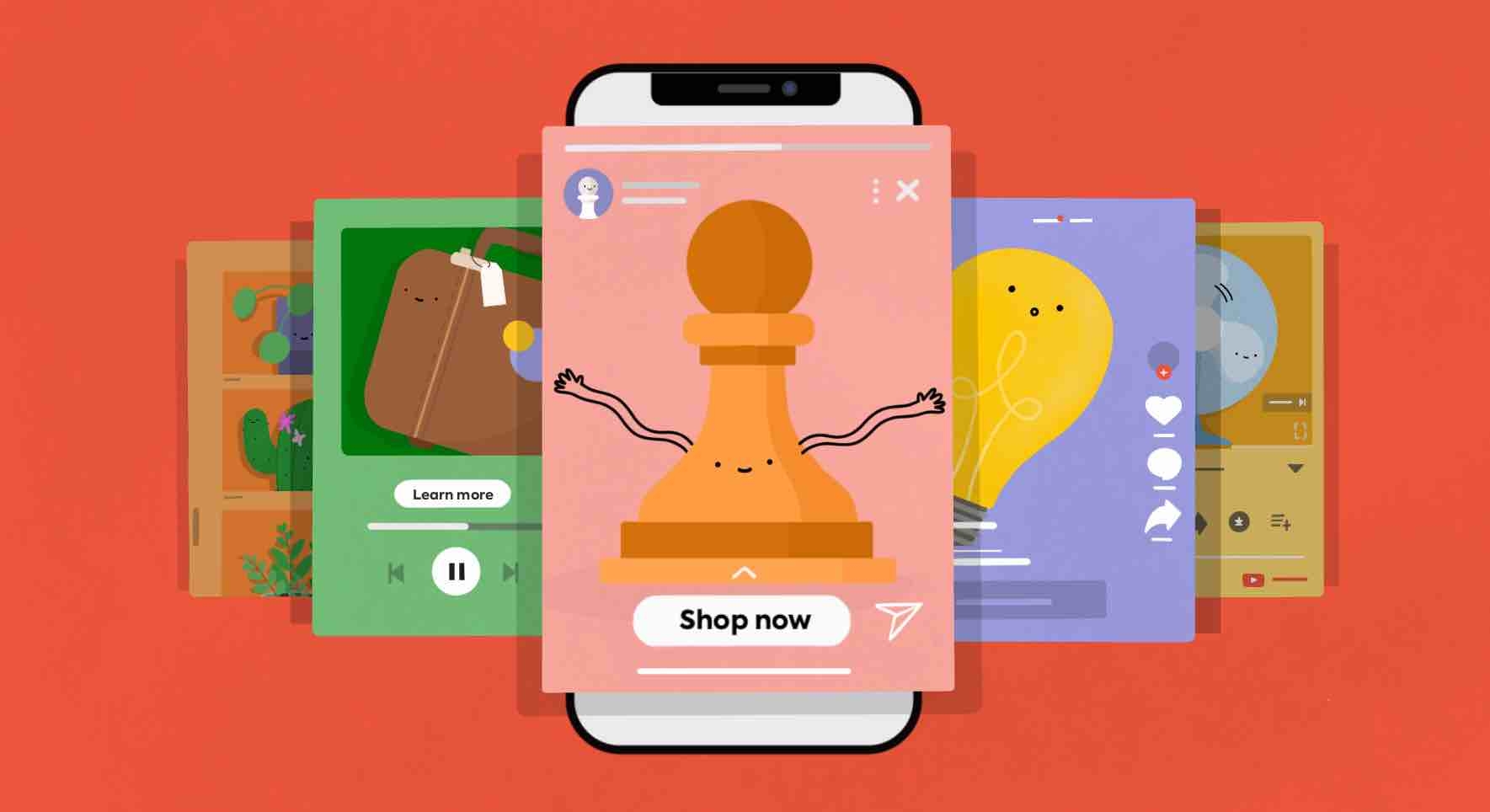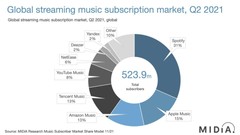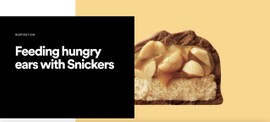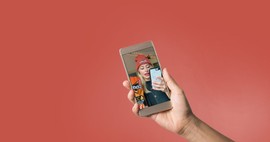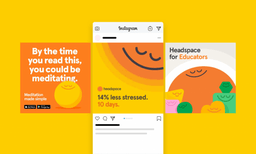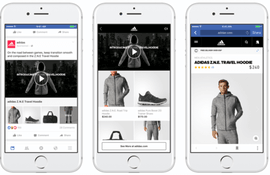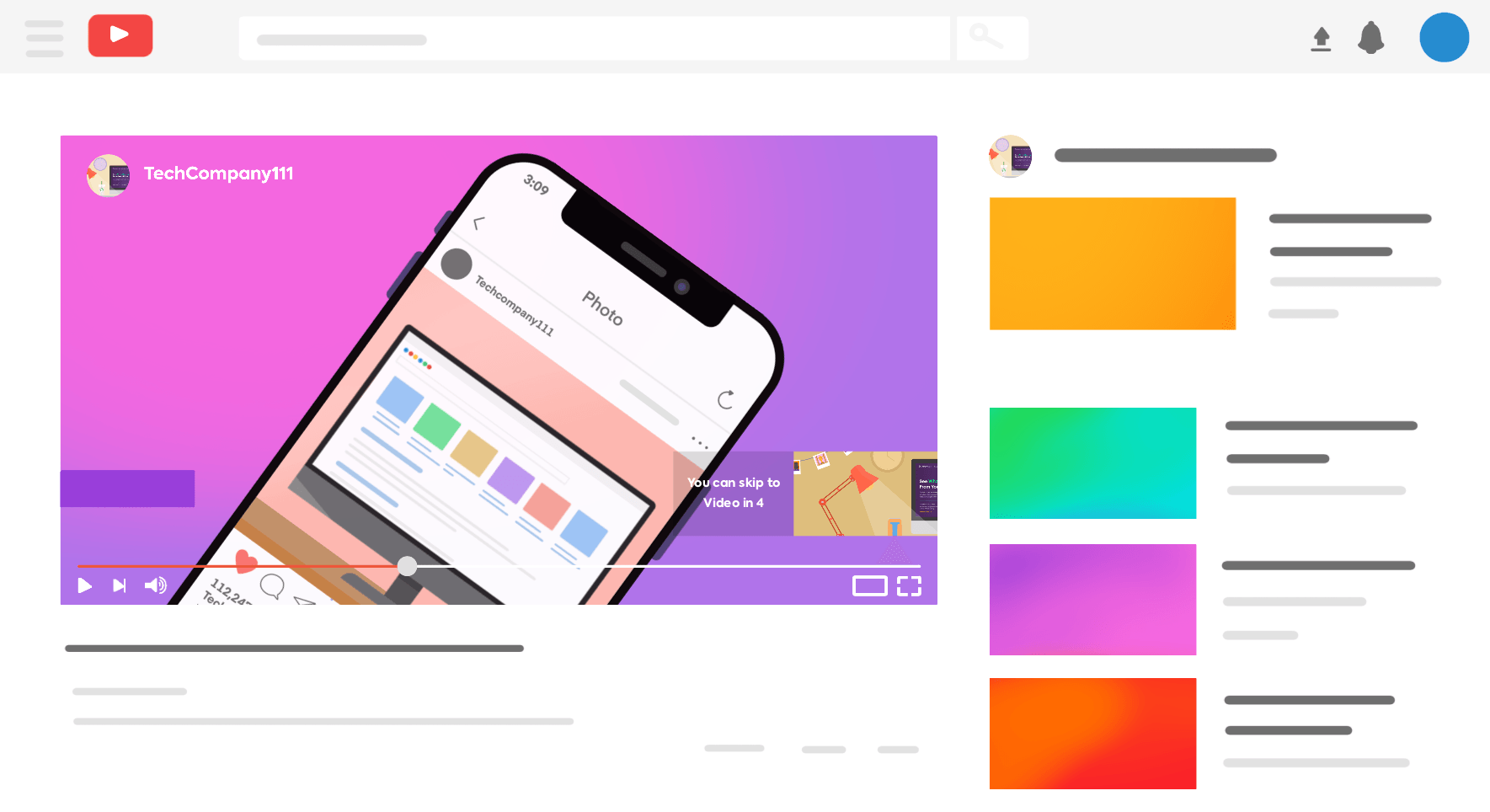Want to stand out when you advertise on mobile ads?
With the exponential rise of social media, and a report by eMarketer showing that we now spend more than 3 hours per day on average on our smartphones, mobile advertising has become one of the most important channels for marketers.
But gone are the days of simply resizing desktop ads and hoping for the best. Today’s mobile devices have unique dimensions and features that influence how users interact with the screen and how they see your ads. Meaning users want, and have come to expect, much better from the ads they’re served on their device.
In this article, we’ll explore the various different forms of mobile ads and show you how some of the world’s most recognisable brands use the medium to reach the right demographics with the right message.
What Are Mobile Ads?
The name kind of gives it away. But to be clear, when we talk about advertising on mobile ads, we mean any form of mobile device such as smartphones and tablets. To get more specific than that, we need to break the various forms of mobile ads into different categories.
8 Common Types of Mobile Ads
Learn the basics of the most commonly used mobile ad formats.
1. Social Media Ads
These are ads served up across social media platforms such as Facebook, Instagram, and TikTok. They take various forms within each app – from Stories ads, to static images or videos within the feed.
2. Mobile Banner Ads / Mobile Display Ads
Mobile banner ads are small, often rectangular banners that display ads at the top or bottom of your screen. They’re most common within apps and news publication sites. They stay on screen while users are active within the app or on the page, refreshing from time to time.
3. In-App Display Ads
In-app advertising allows app developers to earn money through ads delivered inside their mobile apps. In-app ads have lots of different formats such as banners, rewarded videos, and playable demos.
4. Interstitial Ads
Interstitial ads are full-screen static or video ads that appear during a transition in the app, like in between levels in a game. Positioning them between transitions makes them less intrusive and maximises engagement rates.
5. SMS Ads
SMS ads involve sending a short text message directly to the user’s device, usually consisting of a promotional offer and call-to-action. As a form of opt-in marketing, contacts need to subscribe first.
6. Native Ads
These are ads that blend in with the content of the page, such as product placements or written advertisements within an article. This makes them appear as part of the content itself, making it more likely to receive some sort of engagement than other formats which are instantly recognisable as ads.
7. Video Ads
These are the videos you don’t want to watch before getting to the content you’re interested in. Like when you visit YouTube to watch a highly-educational-and-not-at-all time-wasting video on sheepdog training but before you do, a couple of ads that have nothing to do with sheepdogs appear.
8. Audio Ads
Audio ads are the ads you hear in between songs, in ad breaks during podcasts, or whatever content you’re streaming through a listening app.
How Effective is Advertising on Mobile Ads?
There’s not a lot you can’t do on your mobile device these days. As they get better and more powerful, they’ve taken on tasks that would usually need a desktop computer (in fact, I’m actually writing this on my phone whilst sitting in a dance school waiting area to collect my eldest child, that wasn’t possible ten years ago).
One “task” that’s exploded on mobile devices is online shopping. According to Statista, smartphones were responsible for 72% of retail site traffic worldwide and 61% of online shopping orders in the first half of 2022.
Tapping into predominantly mobile audiences can generate big uplifts in brand awareness. Case in point – vegan deodorant manufacturers, Schmidt Naturals, used YouTube’s six-second, unskippable native Bumper ads to efficiently deliver personalised creative spots, driving awareness and recall among millennials. By the end of the campaign they had reached 2.2M new users and saw a 48% average uplift in brand awareness.
5 Unique Ways to Use Mobile Ads (With Examples)
Whilst simple news feed images and banner display ads are effective, there are plenty of other ways to get creative and advertise on mobile ads.
Some might work better than others, according to your business, budget, and target audience. As with anything in marketing, it’s all about testing and refining. But until you give them a try, you’ll never know.
Big brands have been there and done it. So let’s take a look at a few successful campaigns to see what we can learn. You never know, they might serve as inspiration for yours!
1) Audio Ads on Spotify
Most brands tend to shy away from audio ads as the format is less familiar. But if you’re looking for a way to get good cut-through when you advertise on mobile ads they should definitely be on your radar as an option. Why?
Firstly, because millions of people use their phones to listen to music and podcasts, with the majority doing so through Spotify.
Secondly, audio ads get around the phenomenon associated with visual ads called ‘banner blindness’ – the tendency to ignore things on a page that people perceive to be ads. Your ad content is piped directly into listeners ears, where it rubs shoulder with their own thoughts. This makes engagement and recall rate much higher.
And they’re also easy to run – Spotify has its own simple self-serve ad platform called Spotify Ad Studio that will allow you to reach the right listeners at the right time.
Example: Snickers and Spotify
This was ably demonstrated by Snickers when they joined forces with Spotify to create ‘The Hunger Spotter’, a tool that analysed listener data and picked out uncharacteristic listening behaviour.
Once identified, Spotify would play one of three songs created by Snickers that called out listeners for their erratic choices “because you’re not you when you’re hungry and neither are your music tastes.” Genius. But did it work?
You betcha.
According to Spotify, “the experience was a huge success. The ‘Hunger Spotter’ campaign took home victories at the British Media Awards, Drum Marketing Awards, and more”.
Key Takeaways From This Example
- Running Spotify ads is easy with Spotify Ad Studio.
- You can still be creative without visual media.
- Try to focus on targeting the right users at the right time.
2) Challenge-Based Ads on TikTok
TikTok is the most popular social app among the younger generation, evidenced by a report by Qustodio that shows under 18s use it for an average of 75 minutes per day. As a result, it’s become the key platform for brands to advertise on mobile ads.
Some of the best-performing ads on TikTok are branded challenges, where users are encouraged to post a video of themselves trying something under a branded hashtag.
It’s a great way to get people involved and let’s be honest, way more fun than staring at bland ads all day. So it’s no surprise some of these campaigns go viral, especially when brands team up with popular TikTok influencers.
Example: Doritos Truth or Dare App Campaign
Doritos ran a TikTok ad campaign to get users to download their “Truth or Dare” app. Once downloaded, users were confronted with a series of truth or dare challenges from Google’s Voice Assistant. And they’d be encouraged to play it in a similar way to the influencer, who was the face of the campaign.
It was a huge success. In just one day, the ad delivered over 5 million impressions, 4.7 million video views, and 1 million clicks, with a well above-average click-through rate of over 20%. This success was in part driven by the collaboration of a top dutch TikTok influencer @saarbabyy.
Key Takeaways From This Example
- Don’t neglect TikTok.
- Think about ways to make challenge-based mobile ads.
- Partner with relevant social influencers to launch campaigns.
- Authenticity and user-generated content are very powerful and don’t feel as annoying or intrusive as some other ways to advertise on mobile ads.
3) Video Stories Ads on Instagram & Facebook
Facebook Stories and Instagram Stories have 500 million daily users each, with completion rates of over 80%.
58% of people surveyed say they have become more interested in a brand or product after seeing it in their Stories. And 50% have taken it one step further by visiting a website to buy something.
Clearly, Facebook and Instagram have some serious pulling power in terms of reach and buying potential. That’s why 4 million businesses advertise on their Stories feature. Businesses such as Headspace. So let’s take a closer look at their, ahem…story.
Example: Headspace
Meditation company Headspace wanted to find a way to promote its app and increase brand awareness. So, instead of just placing ads in the News Feed, as they usually did, they added Stories to the mix.
Headspace used brightly-colored, animated video ads with soothing audio over the top that described how their app improves sleep and relaxes the mind. Ads also included a “Learn More” button that linked to a ‘free trial’ landing page on their website.
As a result of their (smart) choice to include Stories in their campaign, they enjoyed a 4.3-point lift in brand awareness versus running the ads in News Feed alone.
Key Takeaways From This Example
- Include Stories in your ad campaigns.
- Combine them with News Feed or other ad features on Facebook/Instagram.
- Make the most of the creative tools available – images, videos, audio, and effects.
4. Interactive Mobile Ads
Another great way to advertise on mobile ads is by making them interactive. Getting the user involved in some way.
The most obvious example is gamified ads. You know the ones I mean – when you need to watch an ad to get free credits to carry on playing a game, and the ad itself is a playable demo of another game. Gamified ads are a great way to advertise to a massive audience – two-thirds of Americans play video games (70% on their phones).
But it’s not just gamified ads. With the quality of touch screens in modern phones, there are endless possibilities for advertisers to get creative in how they involve users. Immersing users in the ad through Augmented Reality (AR) or Interactive Start/End Cards, for example.
And the benefits are clear – interactive mobile ads have higher conversion and retention rates, they increase brand awareness, and allow advertisers to capture unique in-ad data.
Example: Samsung Galaxy S6
For the launch of its Galaxy S6 smartphone, Samsung teamed up with InMobi to create interactive ads focused on a universal problem for smartphone users �– battery life.
To generate awareness among existing Samsung customers and others, Samsung used a technique called ‘moment marketing’ – capturing users at a time they need something the most. In this instance, when their batteries were running low.
The ad displayed the remaining battery life. But crucially, it also showed the (short) time it would take to achieve a full charge, demonstrating the S6’s fast-charging capabilities to users in real time. Their “Experience” CTA button then gave users a personalized ad and relevant demo on the new S6 phone.
Results were good for this kind of display ad. 1.6% of users tapped on the “Tap to find more” button. 1.1% clicked the “Experience” CTA and people spent an average of 20 seconds on the ad. That may not sound like much, but these are very impressive stats for a display ad campaign, which typically see much lower engagement rates.
Key Takeaways From This Example
- Interactive ads are great because they involve the user.
- They have a lot of creative potential – so get your thinking caps on.
- Try to personalise the ad where possible for that extra human touch.
5) Facebook Collections Ads
Collections ads are a new(ish) mobile-only ad format. They show multiple items at once, with one main image or video taking centre stage and others featuring underneath.
When users click, they’re taken to a large product feed, which shows them all the products in a relevant collection that they can scroll through. If they click on one, they can be taken to the product page or the site page of your choosing.
If you’re going to advertise on mobile ads, Collections ads are a great option. They’ll help you close the gap to desktop conversions, which remain higher than mobile because of its ease of use when researching products.
Example: Adidas ZNE Hoodie
Adidas created a Facebook Collections ad ahead of the launch of its new ZNE hoodie. They used images and videos to showcase the cool new features of the hoodie, like hidden pockets, as well as similar products that would appeal to the same audience. When the user clicked the video, the experience became full-screen and highlighted the products in more detail.
Key Takeaways From This Example
- Use a mix of images and videos.
- Consider what users would look for on desktop and include it in your ad.
- Whilst you can focus on just one product in more detail, also think about showcasing similar products.
Reach Real Customers When You Advertise on Mobile Ads
Before you go, there’s one last thing to consider to make your mobile ad campaigns as effective as possible.
10 – 20% of ad spend is typically wasted on bots and fake users on social media platforms. Lunio can help you to ensure your ads only reach real humans by preventing click fraud across all of the mobile advertising channels we’ve discussed today, and more.
By eliminating invalid activity from your campaigns, you can reinvest saved funds into reducing your cost per lead, drive greater overall volume, and make your marketing budget go further. Learn more and get started with a free trial today.
Maximise Performance
Join our 14-day trial to engage genuine users and understand the potential of Performance Max.
